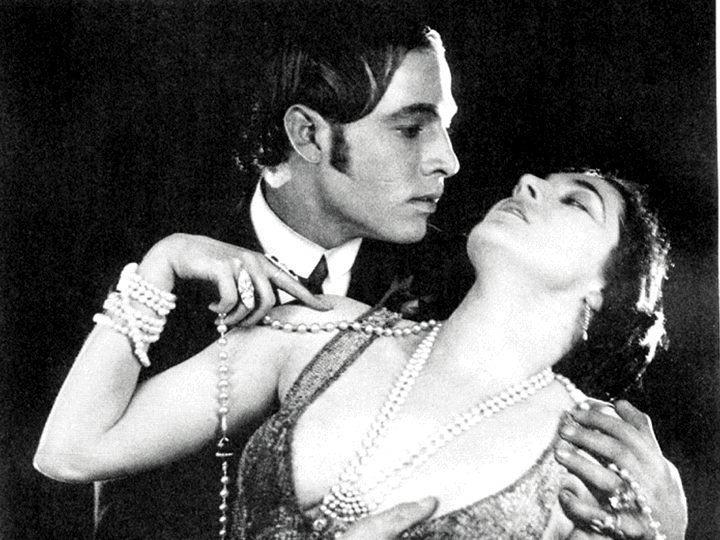MOVIE REVIEW : THE LOST AND FOUND OF ‘HORIZON’
- Share via
“Welcome to Shangri-La.” In the half-century since H. B. Warner uttered these words in “Lost Horizon,” the phrase “Shangri-La” has become a permanent part of the language, signifying an earthly paradise. In that same period of time, “Lost Horizon” has become one of the most beloved films of that most beloved of directors, Frank Capra.
It has also had its original running time of 132 minutes whittled away over the years, the most drastic cuts having been made for TV presentation in the ‘50s. In 1974 Robert Gitt, UCLA Film Archives restoration director, began the painstaking process of attempting to locate missing footage, and his handsomely restored version opens a one-week enagagement Sunday at the Nuart.
For the record:
12:00 a.m. Aug. 3, 1986 IMPERFECTION
Los Angeles Times Sunday August 3, 1986 Home Edition Calendar Page 99 Entertainment Desk 2 inches; 49 words Type of Material: Correction
The loving restoration of “Lost Horizon” was done not by the UCLA Archives, as misstated in a June 28 article, but by the folks at the American Film Institute. UCLA and others provided valuable support, according to Steven Gong of the AFI’s National Center for Film and Video Preservation, but AFI spent 13 years restoring Frank Capra’s 1937 classic.
Gitt came up with a complete sound track and filled in the 6 1/2 minutes he was unable to find with stills and freeze frames--the same procedure used in the restoration of George Cukor’s “A Star Is Born.”
As moviegoers will remember, H. B. Warner’s immortal greeting was extended to Ronald Colman and his party, whose plane crashed during a storm high in the Himalayas somewhere near Tibet in March, 1935. Colman has been charged with evacuating the foreign residents in a Chinese province caught up in a revolution only to find that he, his younger brother (John Howard), a fussy paleontologist (Edward Everett Horton) and two shady types (Thomas Mitchell and Isabell Jewell) have been mysteriously kidnaped. And as the film progresses, Colman comes to realize that his presence there was destined.
Adapted from the James Hilton novel by Robert Riskin, Capra’s longtime collaborator and one of the cinema’s finest screenwriters, “Lost Horizon” remains timeless in its essential appeal. Indeed, Colman’s pacifist sentiments would be cheered at an anti-nuke rally. And the starkly beautiful Streamline Deco lamasery (with appropriate Mongolian touches) now looks right back in style after decades of looking dated.
Yet the irony of “Lost Horizon’s” restoration is that it suggests that, aesthetically, more is not necessarily more and that longer is not always better--even if the goal of restoring and preserving a film’s most authentic form is an ideal. It would seem that the problem with “Lost Horizon” was not that it was cut for general release but that it was not cut as adroitly as it might have been.
The truth of the matter is that once past the film’s exciting opening sequence, Shangri-La soon begins to seem mighty uneventful for all its mysteriousness. Luckily, Capra was able to catch us up in the spell that Shangri-La casts over most of its inhabitants, and he had at his disposal a roster of actors--including Jane Wyatt as Shangri-La’s beautiful pianist--who seem born for their parts. Colman conveys perfectly a wise, gentlemanly world-weariness and Sam Jaffe’s ancient High Lama is mesmeric as he reveals Shangri-La’s purpose in preserving civilization in a darkening world. Mitchell and Horton--two great character actors--are very touching as they get caught up in new lives in Shangri-La. Yet it’s not really all that convincing that the exquisite Margo should want to leave so badly.
But what kind of Utopia is Shangri-La, after all? For all the High Lama’s sincere and noble sentiments, the man seems in fact to be a benevolent dictator living with his acolytes in awesome luxury while the peasants till the fields far below. And despite Shangri-La’s locale, Warner speaks of the prevalence of the “Christian ethic”; you’d think that a synthesis with the wisdom of the East might be in order.
Yet there’s an innocence and idealism in “Lost Horizon’s” projection of its notion of the perfect society that at once redeems and sustains the film--qualities that were notably absent in its unfortunate 1973 musical remake.
One of the marks of a screen classic is that while it retains its central meaning, you can respond to it differently at different stages in your life. As a child you respond to “Lost Horizon” (Times-rated Family) unquestioningly as it transports you to its awesome, shimmering fantasy world; as a young adult you understand why John Howard finds Shangri-La so suffocating and you understand his eagerness to get back to the challenges of the real world. But by middle age, Shangri-La begins to look awfully inviting . . . .
More to Read
Only good movies
Get the Indie Focus newsletter, Mark Olsen's weekly guide to the world of cinema.
You may occasionally receive promotional content from the Los Angeles Times.









